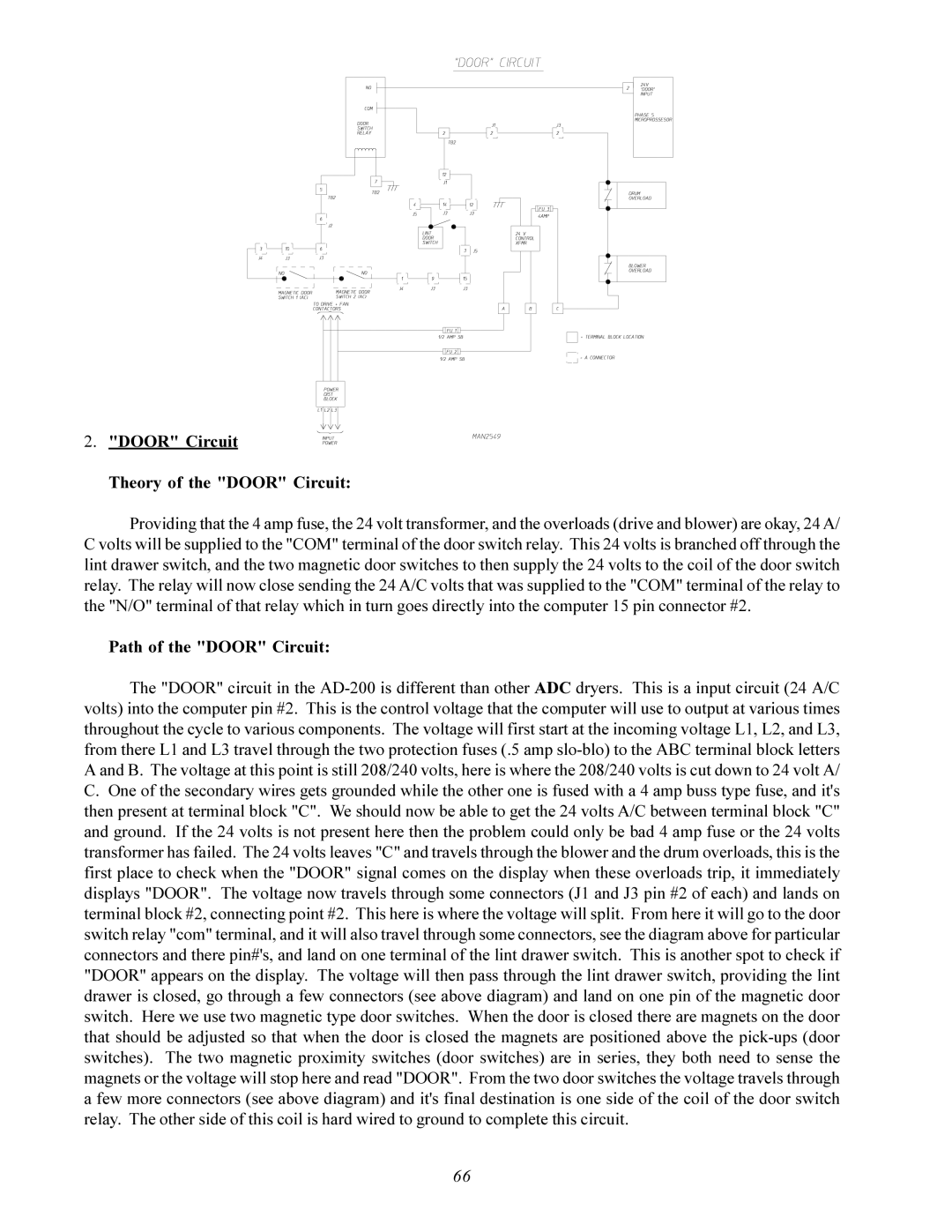AD-200 specifications
The American Dryer Corp AD-200 is a renowned commercial dryer that stands out in the market for its efficiency, performance, and durability. Designed for high-demand environments such as laundromats, hotels, and gym facilities, the AD-200 delivers robust performance while maintaining user-friendly operation.One of the standout features of the AD-200 is its capacity. With a generous drum size, this dryer can handle large loads, making it ideal for businesses with heavy laundry demands. This not only maximizes productivity but also allows users to process more laundry in less time, which is crucial in high-turnover environments.
The AD-200 employs advanced drying technologies that promote faster drying times while minimizing energy consumption. Its innovative airflow design ensures even heat distribution throughout the drum, allowing laundry to dry uniformly without hot or cold spots. This feature enhances drying efficiency and helps in preserving the quality of fabrics, reducing wear and tear over time.
Energy efficiency is a key characteristic of the AD-200. It is equipped with an EcoDry system that optimizes the drying process, significantly reducing operating costs. This technology monitors moisture levels in the drum and adjusts drying times accordingly. By preventing excess energy use, the EcoDry system not only helps in saving on utility bills but also aligns with environmentally responsible practices.
The AD-200 is built for reliability and longevity. Constructed with high-quality materials, it features a heavy-duty stainless steel drum that resists scratches, dents, and corrosion. Additionally, the unit’s design incorporates easy access for maintenance and service, which can drastically reduce downtime and operational disruptions.
In terms of user-friendliness, the AD-200 comes with a simple control interface that allows operators to select drying cycles with minimal effort. The intuitive controls and clear display make it accessible for all staff members. The dryer also includes adjustable drying times and temperatures, giving users flexibility to cater to different fabric care requirements.
Overall, the American Dryer Corp AD-200 is a steadfast solution for commercial laundry applications. Its combination of capacity, efficiency, and durability makes it a preferred choice among business owners looking to enhance their laundry operations while keeping costs manageable. With cutting-edge technology and user-centric design, the AD-200 stands as a reliable asset in the realm of commercial drying solutions.

